 [As an unexpected consequence of my support in mid-2004 for the founder of the “Formation Professionnelle Supérieure (FPS)” program at the Centre d’enseignement professionel de Vevey (CEPV), and for the then-current and incoming students who’d signed up for it and then gone on strike when a gaggle of bureaucrats dismantled it without warning, I found myself under attack in the Swiss press from one Pierre Keller. At the time, Keller headed an institution just down the road that competed with the CEPV for recognition and students — l’Ecole cantonale d’art de Lausanne (ECAL), which translates roughly as the Lausanne University of Art and Design.
[As an unexpected consequence of my support in mid-2004 for the founder of the “Formation Professionnelle Supérieure (FPS)” program at the Centre d’enseignement professionel de Vevey (CEPV), and for the then-current and incoming students who’d signed up for it and then gone on strike when a gaggle of bureaucrats dismantled it without warning, I found myself under attack in the Swiss press from one Pierre Keller. At the time, Keller headed an institution just down the road that competed with the CEPV for recognition and students — l’Ecole cantonale d’art de Lausanne (ECAL), which translates roughly as the Lausanne University of Art and Design.
Keller and I had never met or spoken, which didn’t prevent him from opining blithely that Radu Stern — Deputy Director of the CEPV, in charge of its School of Applied Arts, which housed the CEPV’s original technical-vocational program and Stern’s creative-photography companion thereto — had “manipulated” me into support for that program via a “single email.” He did so in the course of a February 19, 2005 interview for the regional newspaper. (Click here for that interview, in French.)
Keller has made such uninformed, arrogant bluster and mendacity a stock-in-trade. According to one of his admirers, Michele Laird, “his nomination in 1995 to the directorship of ECAL was not well received, so the first thing he did, says Keller, was ‘to get rid of those who got in the way.'” Keller is also a member of the center-right Radical party, which considered running him for office in 2008. He turned down their offer, on the grounds that “I prefer to give orders, not make laws.” Not a fellow to trifle with, obviously; but then you could say the same about me.
Clearly seeing the CEPV program as a threat, Keller colluded with Michel Berney, director of the CEPV; Christian Rossier (on the technical faculty of the CEPV); local entrepreneur Vincent Juillerat; and Anne-Catherine Lyon — director of the Department of Education, Youth and Culture (DFJC) for the canton of Vaud, which includes both institutions — to gut it, turning its culminating year into a stint at what Keller elects to call “my school.”
The new program they conspired to force into place at the CEPV collapsed within a year, because the current students walked out and nobody signed up for it. A disaster for all involved except Keller, for whom it represented a win-win; failing to co-opt a competitor he’d destroyed it, and the institution he ran remained intact. — A. D. C.]
•
Letter to the Editor of La Liberté/Le Courrier
![]() February 20, 2005
February 20, 2005
To whom it may concern,
I have read with much amusement the self-aggrandizing interview with Pierre Keller of l’Ecole cantonale d’art de Lausanne. In it, M. Keller has the temerity to propose that my position in regard to the willful destruction of the formerly excellent photography program at the CEPV in Vevey results from my having been manipulated by a single email from Radu Stern, the creator and former director of that program. (Click here for a PDF of that article, in French. Click here for a French translation of this response.)
M. Keller appears entirely unaware that I am bilingual and Francophone; that I was teaching in Vevey, in that program, last spring, when this crisis erupted; that this was my third teaching stint in the program, so I’d come to know it well; that I attended the formal June 4, 2004 presentation of the new, “improved” version of that program by those responsible for the demolition of the old one; that I read all the documentation thereof that they presented to the school’s faculty and students; that I had the opportunity to speak at length during those weeks with both current and past students of the program; and that I also had the occasion to speak during that time with a number of the other visiting faculty — intervenants — who, like myself, had taught in the program both that year and previously.
So I arrived at my opinion of the situation not from reading any mythical email from M. Stern, but from direct, first-hand observation and research in Vevey. When I returned home to New York after my seminar concluded, I found waiting for me a letter from the new committee in charge of the CEPV program, outlining the new program and soliciting my opinion thereof. I took that request seriously. Based on my own investigation of the situation in Vevey, I made my opinion known to them in a lengthy analysis of the previous version of the program and of the new one (as they themselves had explained it to us in l’Aula of the CEPV and the accompanying documentation).
My assessment of the new program was not favorable, to say the least.
I gather that M. Keller has not taken the trouble to read that letter. If he had, he would surely know that — unlike most of my colleagues — I did not refuse to teach henceforth in the program. As I explained, while I respect the decisions my colleagues made in their exodus from the program, I do not believe in punishing students for the sins of their faculty and administration. So I indicated that, if the new administration wanted me to return, I would consider seriously any such invitation from them, as I do with all such offers.
As this may suggest, I am inclined to think for myself, to choose my own course of action, and to take positions regardless of the others around me. The habits of 38 years as an independent journalist, critic, and scholar have become ingrained, for better or worse. Anyone who knows my writing (as M. Keller clearly does not) will confirm that. So the suggestion that I functioned in this situation as some mindless pawn of the supposedly Svengali-esque Radu Stern is, if you’ll pardon my French, risible.
And under no circumstances should anyone group me with those former visiting faculty who have refused to continue their affiliation with this program. Demonstrably, I took a different path. If I do not teach again in the CEPV/ECAL program, it will be specifically because the faculty and administration thereof have not invited me back.
To enable anyone who so wishes to verify this, and because M. Keller has chosen to denigrate me in print, I have authorized the public posting at this site [the blog set up by the protesting students] of my July 24, 2004 letter to Vincent Juillerat and Christian Rossier of the CEPV, referred to above. I have yet to receive the courtesy of a response to that letter. For that reason, and to prevent the use of my involvement with a previous program to promote a new program with which I have no connection, last fall I, along with other former faculty, signed an open letter forbidding the use of our names in publicity for the new formation. (As of the end of August [2004], we were still being used unscrupulously by the school for that purpose.)
I gather that M. Keller has no intention of asking any of the former intervenants to teach at what he refers to so casually as mon école — “his” school. (An interesting locution, that. It speaks volumes.) What he and his colleagues at ECAL have to offer photo students in place of extended encounters with Arno Rafael Minkkinen, Sarah Moon, Antonin Kratochvil, Franco Fontana, and several dozen other internationally known figures remains to be seen.
As a teacher, my commitment is first and foremost to students — those who work with me, of course, but students in general. A bad program serves no good purpose, though it may in some ways further the careers and line the pockets of its faculty and administration. So, with all that said, despite M. Keller’s ignorant, arrogant, insulting, and unprofessional comment about my presumed manipulability, and his misrepresentation of me as having refused any future participation in the program, for the sake of its present and future students I wish for nothing but success for the new CEPV/ECAL initiative.
Should M. Keller feel compelled to fabricate any further fictions about me, I strongly advise him to do so in a language I don’t understand, to reduce his chances of getting caught at it red-handed. I can read German, and Italian, and Spanish, so he might want to consider Finnish.
Yours,
/s/ A. D. Coleman
(For a brief follow-up interview with me by Michaël Rodriguez of La Liberté / Le Courrier— in French only, alas — click here.)
•
Postscript: Unwilling to continue as Deputy Director of a program installed by fiat over his objections, in whose design he had no voice, and with whose pedagogical premises he disagreed fundamentally, Stern accepted the Canton of Vaud’s offer to transfer him laterally to the position of Director of Education at the Musée d’Elysée in Lausanne, with the same salary and benefits. I don’t consider it irrelevant that Stern is of Jewish descent, born in Romania, and thus an outsider according to the mentality of the increasingly xenophobic and anti-Semitic small-town Swiss.
Rossier, promoted to Dean of Photography of the CEPV as a reward for collaborating with Berney, Keller, and Lyon, got removed from that position and demoted to its lowest teaching responsibility as the consequences of their coup became inescapable. Juillerat moved laterally, co-directing a small-scale film and photo festival in Vevey. Anne-Catherine Lyon lost the lawsuit the students brought against her, receiving a judicial reprimand, but remains in place as director of the Department of Education, Youth and Culture (DFJC) for the Swiss canton of Vaud, which includes both Lausanne and Vevey, a position to which she was elected in 2002.
In 2011 Keller reached the mandatory retirement age and left the directorship of ECAL in order to become president of l’Office des vins vaudois (OVV), the ministry of wine for the canton of Vaud. A few months later, Michel Berney retired as director of the CEPV. In an interview shortly thereafter, he said, disingenuously, “I get along very well with Pierre Keller, although at one time tensions erupted between the CEPV and the School of Art and Design Lausanne. … The [CEPV] has acquired an international reputation, we feel the weight of the past … I like to say, ‘Photography has a first name: Vevey.'” (In your dreams, pal.)
Summing up: On a purely practical, bottom-line level, this gang of five, in cahoots with other accomplices, took a program that operated in the black — as much so as any such program does in Switzerland — and turned it into a losing proposition, with no clientele, in the space of about 18 months. (Like most such programs in Switzerland, this one received substantial cantonal and national subsidies.)
Even by Swiss standards, I suspect that’s no mean feat, and not something easy to overlook or explain away with an “Oops!” But the forces behind the destruction of the CEPV’s “Formation Professionnelle Supérieure (FPS)” have never had to justify in public, on the record, their killing off a program that, among other things, was both financially viable and successful in attracting outstanding students and visiting faculty.
The upper-level program in creative photography now offered at the CEPV requires two years of rigorous polytechnic-style craft training (at this school, or the equivalent elsewhere) before the student can begin pursuing his or her creative interests within the curriculum. This resembles the model exemplified by the Rochester Institute of Technology circa 1955 — a peculiarly outmoded vision of post-secondary photo education for the 21st century. And they’ve done away entirely with the capstone of the former Formation Professionnelle Supérieure (FPS), the final year in which the students would pursue their own thesis projects while reading history, theory, and criticism and engaging with visiting faculty in a dozen short, intensive workshops.
That comprised a unique pedagogical experiment which, in slightly over a decade, pumped out remarkable results. Not surprisingly, once the vandals took the handle it became a program that, after a decade, has made no mark whatsoever on the discipline of photo education and the field of creative photography.
How very Swiss of them.


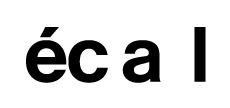
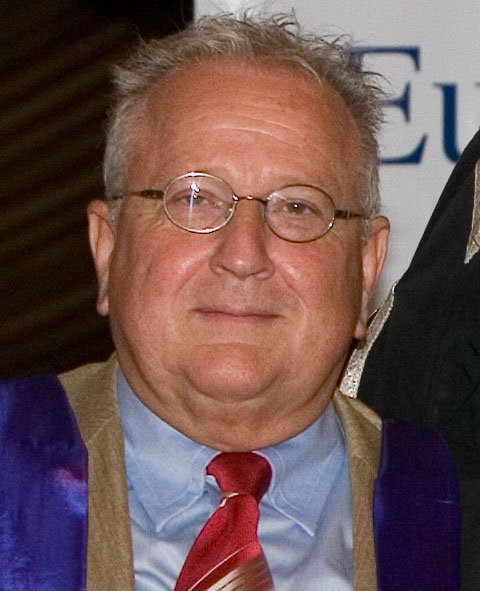
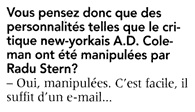
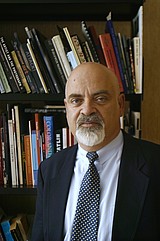
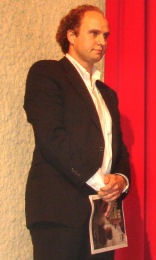
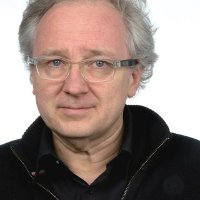

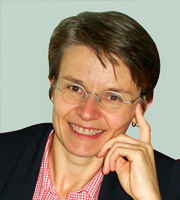
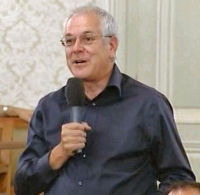
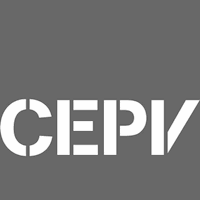




Bravo Caro, ho spero tu stai bene. JPN
Some of these comments are excessive. I fought for saving the 3-year formation in Vevey but I must admit that there was a hard pressure from the Swiss Confederation on the authorities of the Canton de Vaud in this time. Switzerland had to adapt its academical formation to the European Bologne process, and, for that, to create the High Technical Universities (HES). That would give students the same grade than other european students. And Switzerland wanted to have only one such Art university in the whole french part. So, it was the biggest that won, Lausanne.
Laurent Ballif, current Mayor of Vevey
You fail to indicate which of my comments are “excessive,” and to specify how. But many of your assertions are incorrect.
True, the Swiss Confederation chose ECAL as the sole institution granting the High Technical Universities (HES) degree in the French-speaking part of Switzerland.
However, that agreement was made in 2002, along with a stipulation that the CEPV program was not a part of the HES certification system you mention. The Swiss Confederation agreed that the unique CEPV “formation” could operate under a different structure, called École Supérieure d’Arts Appliqués (ESAA).
Under those guidelines, students in the CEPV’s Formation supérieure en photographie (FPS) would receive an ESAA degree after two years followed by a third year (called the Année de perfectionnement). At the end of that third year, the students had to present a theoretical text plus a new, fully resolved visual project in order to qualify for their prestigious CEPV diploma.
That is the program in which I taught from 2002-04, so I had first-hand knowledge of and experience within this structure, having discussed its philosophy and curriculum at length with its founder and fellow faculty members and students over those years.
At the beginning of 2004, when the conspirators I’ve named launched their plot to destroy the CEPV’s FPS program, that program was fully accredited by the Swiss Confederation — without their requiring any modification of the program as conceived by its founder and director, Radu Stern, which, as I understand it, was extremely rare.
So there was no outside pressure to modify that program or to eliminate its third year, as you contend.
I read with unmitigated satisfaction your various accounts of what happened to the CEPV-FPS program. I had been an active member of that program for years teaching two workshops a year: I was part of the faculty which refused to continue collaborating with the new photographic program. I can testify to all that you said as I too was present the year of the political attack and consequential removal of Mr. Stern.
Certainly I can appreciate your willingness to cary on but at the time I felt that the forced removal of Radu Stern was such an offense not only to the honor and intelligence of Mr. Stern, but to the whole faculty as well. Therefore, I felt any further collaboration would have been unethical on my part. I did, however, continue to collaborate with the CEPV school in the department of Visual Merchandising and still do so with great pleasure and satisfaction.
The forced closing of the CEPV-FPS program was a great loss to photographic education. The loss of Mr. Stern as director of the program was an historical mistake that has never been corrected. The bureaucratic logic sustained by the Mayor of Vevey, in order to explain the real cause for the removal of Mr. Stern, fails to justify the damage done and does little to clarify the incompetency of the decision.
Thanks for adding your perspective as a former CEPV faculty member to this series of posts.
As I wrote in my letter to the CEPV administrators, in consenting to continue teaching at the CEPV I intended no disrespect either to my colleagues who chose not to collaborate further with the program or to Radu Stern, its founder. I hold them all in high regard.
As it turned out (not unexpectedly), my offer to continue teaching there under certain conditions proved a mere symbolic gesture. No single member of the CEPV’s administration or faculty has communicated with me in any way since I sent that letter — not even to acknowledge receipt thereof.